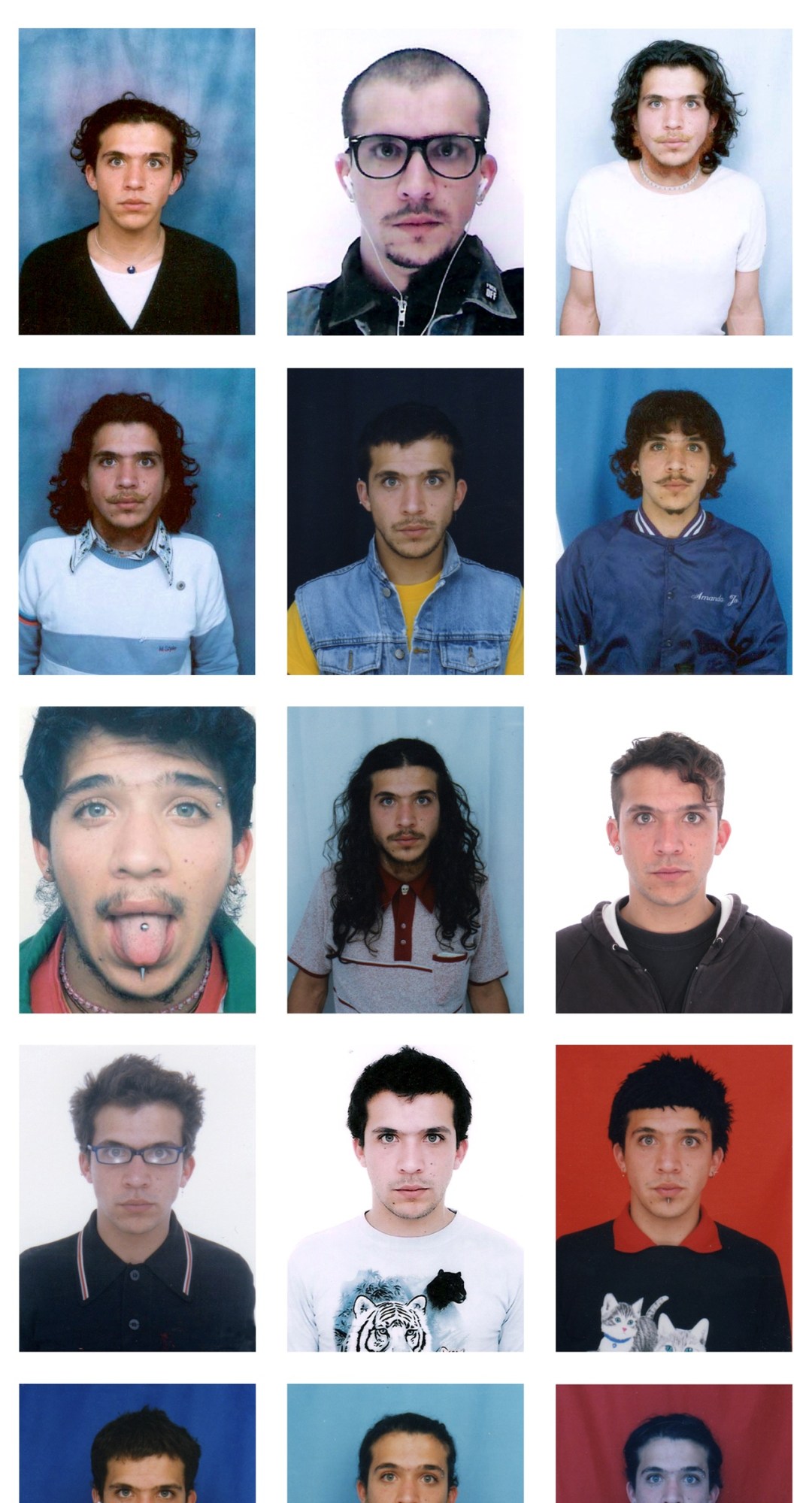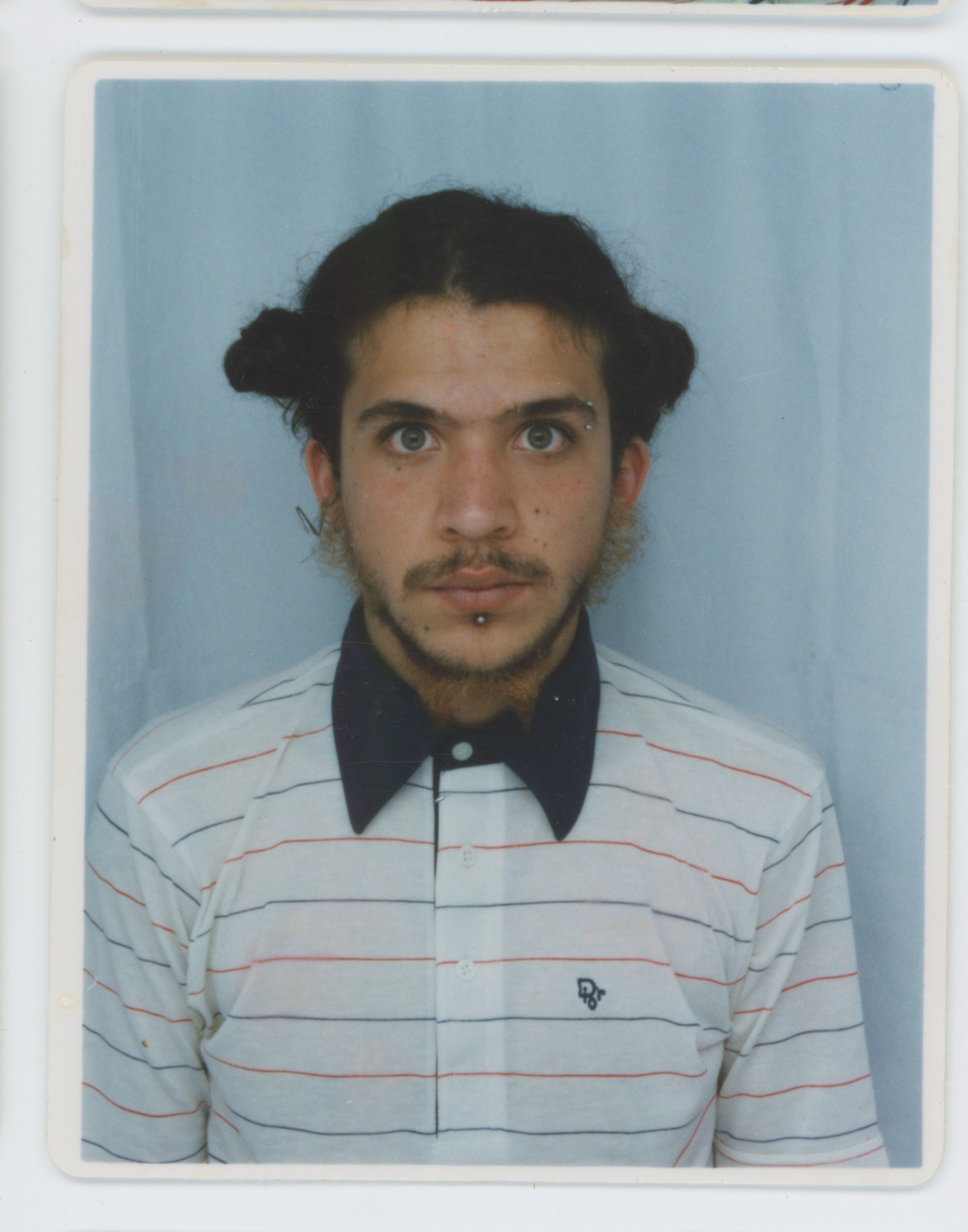Wolfgang Tillmans can vividly remember his serendipitous first encounter with Juan Pablo Echeverri. In 2012, the German photographer was in Bogotá, touring his Serpentine survey show when his regular assistant unexpectedly dropped out. Echeverri, a young artist at the time and little known outside his native Colombia, filled the position seamlessly. “We immediately clicked because I recognised that he shared my passion for detail and precision,” Wolfgang says. “He jumped right in, picking up my specific paper techniques during the daytime, while after work he would show us the underbelly of the city’s nightlife.”
What was only meant to be a one-off job soon blossomed into a 10-year friendship, with Juan even accumulating several guitar credits with Wolfgang’s band, Fragile. Now, their collaboration has entered a new phase, albeit one that Wolfgang never hoped for or expected. One year after Juan suddenly passed away from malaria, a new exhibition – curated by Wolfgang and those closest to the late artist – celebrates his life and memory.

Contrary to its title, Identidad Perdida (Lost Identity) goes some way to locating Juan’s obscure legacy. First shown at Berlin’s Between Bridges before opening its second leg at James Fuentes in New York, the exhibition spans the artist’s considerable breadth of practice, incorporating photography and film as well as sculpture. Each constitutes a single strand in Juan’s life-long exploration of identity through self-documentation, one that began as a student and continued until his final days in hospital.
Joining a long lineage of artists to have placed themselves at the centre of their practice – Cindy Sherman and Claude Cahun to name two – Juan’s work is a transgressive protest against gender and sexual norms. Through his lens both are amorphous and fluid. Where his work differs from those before him is in its celebration of this artifice. As Wolfgang explains: “Superficiality, for him, was not a flaw but a quality, a human characteristic to be dissected and harvested for joy and transcultural understanding.” For Juan, our chameleonic tendencies are cause for humour as well as introspection, and he balances both with an unmistakable lust for life.

Among his multiple series, few embody this ethos better than miss fotojapón (1998-2022, named after Colombia’s chain of high-street photo developers). Started as a student, the project comprises over 8,000 passport-style self-portraits taken daily for 22 years. It is an astonishing feat in both practical and conceptual terms. Presented non-chronologically in a large grid format for this exhibition, Juan’s appearance morphs and mutates throughout; at times barely recognisable beneath makeup or masks and at others glaringly vulnerable under the stark lights of a photo booth. Beyond the clear feats in longevity and perseverance, the work reveals a deeply personal strand to Juan’s practice, journeying towards a deeper knowledge of himself and those around him.
Scanning the series, Juan reveals himself as a master of disguise. It is only once you consider his formative years as a gay man growing up in Colombia during a period of intense political turbulence that this ability doubles as a form of self-protection. “He mentioned to me the terror of boarding the school bus and being picked on as gay years before he knew himself that he was,” Wolfang says. “In his work he deployed a practice of wit, charm and humour – and often exaggeration. So his interest in interrogating identity is really both about survival and fitting in, but at the same time also about transgressing, maybe critiquing, prevalent notions of the need to fit in.”

In other works, Juan uses his sexuality to subvert cultural boundaries and stereotypes. In Around The World in 80 Gays (2007-2015), he becomes the star of his own music videos, wearing full dress-up and lip-syncing to the number one chart song from each country that he visits. Dancing in front of bemused onlookers in front of the Eiffel Tower or on London’s Underground, the work reveals how much the artist revelled in his own shock value. But it also highlights how he shunned a one-dimensional representation of Latin identity in favour of a universal visual language of advertising, fashion and cultural icons.
“Juan’s own cultural background was certainly formed by the Latin American world whilst having a personal and sharp take on US American, British and Spanish pop culture,” Wolfang says. “His in-depth understanding of communication in its visual and linguistic forms made him a seismograph of larger trends that would soon dominate popular culture in general and image consumption in particular.”

Juan’s fluency in English and Spanish only added to this ability to move between cultures, often combining the two to deepen the political messaging of each work. In a series of self-portraits entitled MUTILady (2003) for example, an anatomical diagram is painted onto his bare skin and his hair incrementally cut away. By combining the Spanish word motilar (meaning to crop your hair, as derived from the Latin mutilāre or mutilate) with the word ‘lady’, the work references the plight of women in Colombia, where abortion laws have long been limited by the country’s strong Catholic influence and where marital rape was only criminalised as recently as 1996.
It would be a mistake however, to assume Juan’s protest was only directed at his home country. The universalism that defines his work also shapes its activism. In Wolfang’s view, Juan’s work always “spoke to a larger audience” and, despite placing himself at its centre, “he channelled societies at large through the many guises and clothes, making himself open and vulnerable”. In a time of enforced borders, when gender and sexual rights face a global repeal, his ability to flit between cultural intersections and reveal the human qualities that unite us is sorely missed. This exhibition ensures it is at least not forgotten.
Juan Pablo Echeverri ‘Identidad Perdida’ is on view 7 June–28 July, 2023 at James Fuentes, 55 Delancey St, New York

Credits
All images courtesy the Estate of Juan Pablo Echeverri

